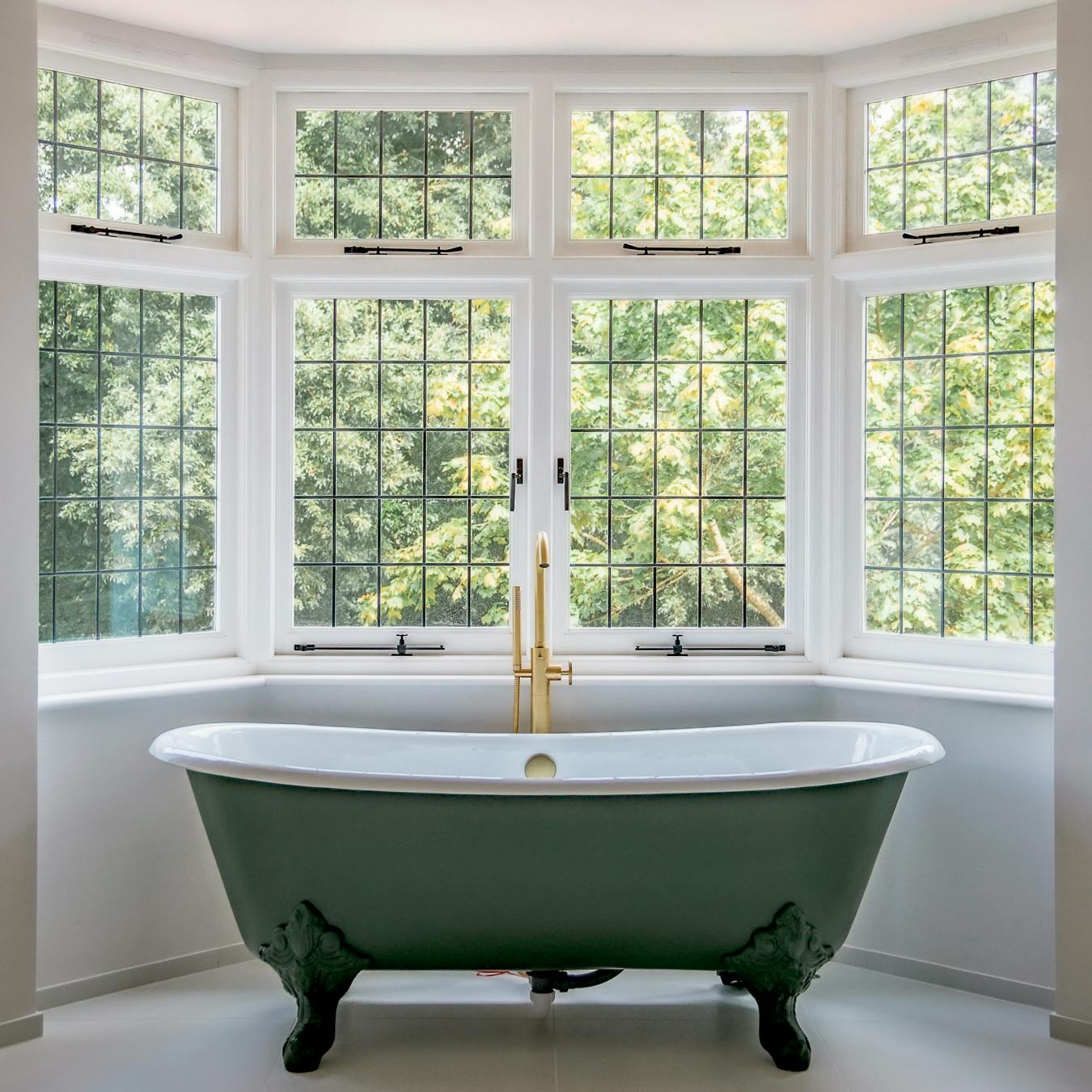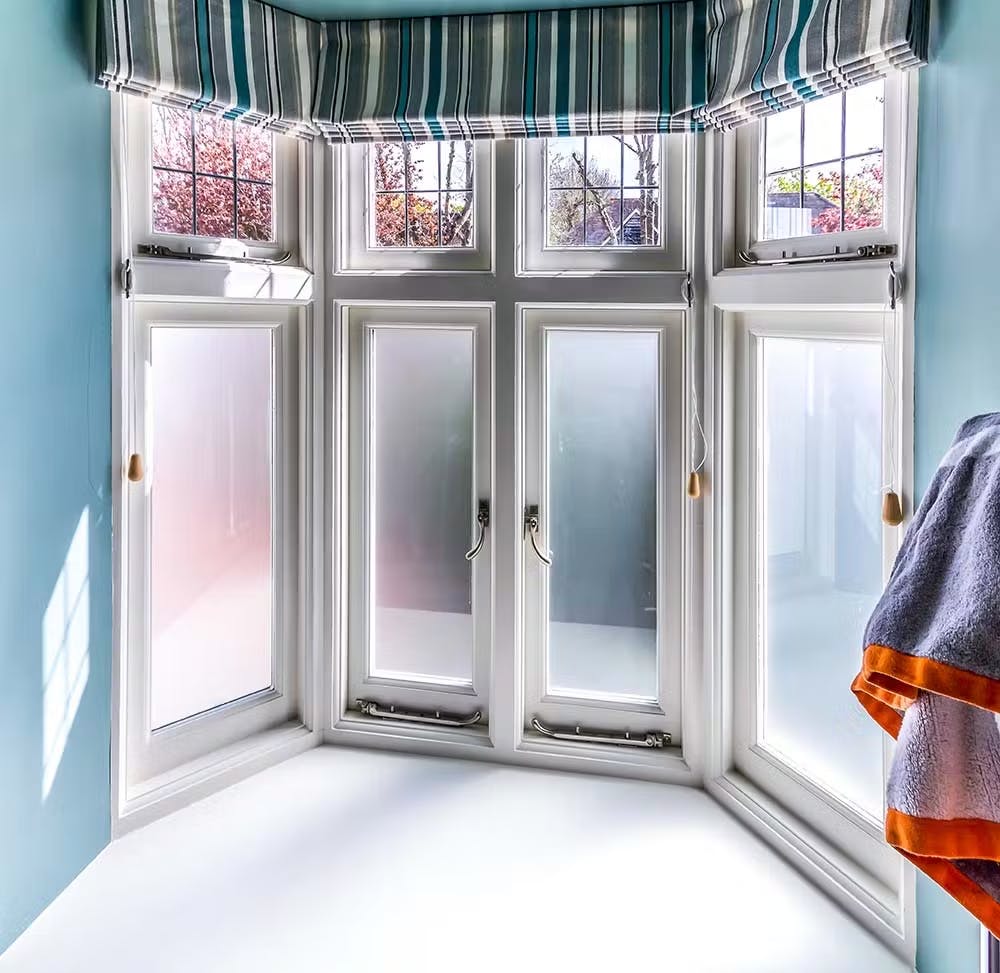French Doors Explained: Which is Best For You?
04 November 2024
French doors are often used to stylishly combine indoor and outdoor spaces. With various designs and materials to choose from, making sure you choose the right type of French doors will improve the aesthetic and functionality of your home. In this guide, we will cover the most popular styles of French doors, which wood is best for French doors, and more, helping you make an informed decision.
Classic Timber French Doors Explained
At Todi & Boys, we offer classic wooden French doors, featuring two separate doors that open either outward or inward on hinges, are often the traditional choice favoured by most homeowners. They offer a timeless feel and fit in well to both period and modern properties.
Ideal for Traditional Homes
Traditional French doors add elegance and style to classic homes, and are a great choice for spaces where you have enough room for doors to open freely. The symmetrical and balanced look that they create adds a feeling of sophistication, particularly in large rooms with high ceilings, although they look great in any room with enough room for them to function properly.
Advantages of Traditional French Doors
- Improved Accessibility: French doors provide easy and direct access to neighbouring rooms, patios, gardens or any outdoor living areas, making them useful as well as stylish. The wide opening makes them ideal if you host guests often, and improves the flow of your space, seamlessly blending indoor and outdoor areas.
- Classic Aesthetic Appeal: Whether you own a classic, period home or a modern new build, the addition of a French door adds a touch of elegance and sophistication to any setting. The simple lines means they are versatile to suit a variety of property styles
- Light and Space: French doors feature numerous glass panels, allowing light to flood into your room, creating more of a connection with the outdoors from the comfort of your living room. This feature not only brightens interiors but also helps rooms feel more spacious and airy.
- Customisable for Any Property: Our classic wooden French doors are available in various finishes and are custom made to suit the specific needs of your property, whether traditional or modern.
French Door Materials
If you want to achieve the best look for your home then choosing the right material is key. While each material offers different advantages and disadvantages, timber stands out for its aesthetic values, adaptability and timeless appeal. Here’s a closer look at the main options:
Wooden French Doors
Timber French doors are the best for bringing warmth, charm and sophistication to a property. They’re the most traditional and offer a natural elegance that can be crafted to suit both new and old properties. At Todi & Boys we only make Accoya French doors.
- Natural Beauty: Timber adds beauty and depth to spaces keeping the overall character of the property intact. Unlike synthetic materials like uPVC and metal, when looked after, timber ages gracefully and keeps its charm.
- Advantages: Our timber French doors can be fully customised in multiple styles and finishes, giving our clients complete flexibility to match any style, whether they want a like-for-like copy of an original French door to match conservation requirements , or want a completely new modern design for their new build. Timber also provides great insulation, helping to keep your home warm all year.
- Disadvantages: To maintain its beauty and to keep it functioning at a high standard, wood requires some routine care, such as periodic painting to protect it from weathering. With the right care, timber French doors are durable and resilient, offering a lifetime of beauty.
Aluminium French Doors
Aluminium French doors are often used in more modern properties. If you have a period property or live in a conservation area, aluminium wouldn’t be the right choice for you. If you have a new build however, then looking at aluminium French doors may be the way for you.
- Modern and Sleek: Aluminium French doors are great for contemporary homes. They feature slim profiles and are available in a wide range of colours.
- Advantages: Aluminium is low -maintenance, and cleaning consists of a quick wipe-down. For those looking for a modern, industrial look, aluminium is a strong choice.
- Disadvantages: Aluminium doesn’t insulate as well as timber, so in colder climates, you will lose heat through your French door. It also lacks the same warmth and traditional feel as wood, and rarely fits well in older properties.
uPVC French Doors
uPVC (unplasticised polyvinyl chloride) is a widely used, cost-effective option for French doors, it’s known for its low maintenance and low cost. Often seen in modern homes, uPVC can mimic other finishes, including wood effects.
- Affordable and Insulating: uPVC is popular due to how cheap it is and is often used in new build properties.
- Advantages: It requires very little upkeep, needing just an occasional clean, and is available in a variety of finishes. Some uPVC styles are made to resemble wood grain, giving you a more traditional look at a lower cost.
- Disadvantages: uPVC lacks the authentic character of real timber, and it can discolour and become brittle over time, especially with prolonged exposure to strong sunlight. uPVC windows can also take away from the beauty of a period property. Even though it’s budget-friendly, it doesn’t have the same feel or durability as timber. It also can’t be used in some conservation areas.
Glazing Options for French Doors
Your choice of glazing will influence both the look and functionality of your French doors. Whether your main focus is insulation, security or aesthetic, you need to make sure you choose the right glazing option for you. Here’s a look at the most popular glazing choices:
Single vs. Double Glazing
Single Glazing
Single glazing consists of one pane of glass and is usually seen in older properties. It looks classic but isn’t insulating or energy efficient.
- Advantages: Single glazing is authentic in appearance and complements period homes well.
- Disadvantages: Single glazed glass is less energy efficient than other glazing options. It allows heat from your home to escape, which results in an uncomfortable environment and higher energy bills. It also provides poor soundproofing and is less secure than double-glazing.
Double Glazing
Double glazing consists of two panes of glass with a pocket of gas between them, usually Argon or Krypton.
- Advantages: Double glazing improves thermal efficiency and sound insulation, making your property warmer and quieter. This makes for a more comfortable environment and lowers your heating bills . It also makes your French doors more secure by adding an extra layer of glass to resist against break-ins.
- Disadvantages: Double glazing is more effective than single glazing, but it also comes with a higher initial price tag.
Toughened and Laminated Glass
Toughened Glass
Toughened glass undergoes heat treatment, making it stronger and safer than normal glass. If it does break, rather than lots of sharp pieces, it breaks into small, blunt fragments.
- Advantages: Toughened glass is an excellent choice for busy areas or homes with small children as it’s safer and less likely to cause injury. It’s also more impact resistant than normal glass.
- Disadvantages: Toughened glass can still shatter under heavy impact. It’s more expensive than standard glass, so will increase the overall cost of your French doors.
Laminated Glass
Laminated glass features a plastic layer in between the two panes, which provides extra strength and durability. It’s useful for adding extra security and insulation.
- Advantages: Laminated glass is great for French doors as it’s highly difficult to break. Even when the glass cracks, the inner plastic layer holds it together, making it a great choice for homes in busy areas that need extra security.
- Disadvantages: Laminated glass is heavy and costly. The increased weight may mean the French door frames need to be specially designed to hold it.
Choosing the Right French Door Style for Your Space
Timber is often the preferred choice when it comes to French doors as it has the most charm and versatility. Here are some top tips to help you decide which French doors are best for your space.
Assess Your Space
Classic french doors swing inwards and outwards, making the perfect for creating an open-plan feel between rooms and outdoor spaces. Unlike sliding and bi-fold doors, they require clearance for full opening but give you an elegant transition between your different spaces.
- Timber Tip: Wooden French doors naturally add character to any room. With the correct planning and layout, classic wooden French doors can still work beautifully even in compact spaces. Get in touch with us to organise a free survey in which we will figure out the best route to take.
Match with Your Home’s Style
Classic wooden French doors are well suited to traditional and period properties. They’re natural, timeless look and finely crafted details makes them an excellent fit for older houses. However, they’re extremely versatile and can be painted in a range of different colours and finishes, offering a look that’s adaptable to a wide range of properties.
- Timber Tip: Our timber French doors come in various styles and finishes, allowing you to match them to your home’s style. Also, you may want to match them to your windows. If you have Georgian sash windows then install a Georgian French door, the same for Victorian and Edwardian Sash windows, we will create the perfect French door to match!
If you’re ready to enhance your home with beautifully crafted French doors, visit our French Doors page. We specialise in bespoke, high-quality timber French doors tailored to complement your style and space.
For more expert advice on selecting the perfect doors for your home, check out our blogs ‘Why Replace Your French Doors?’ and ‘Replacing Your French Doors: How Much Should It Cost?’, or get in touch through our Contact Us page for a survey.





